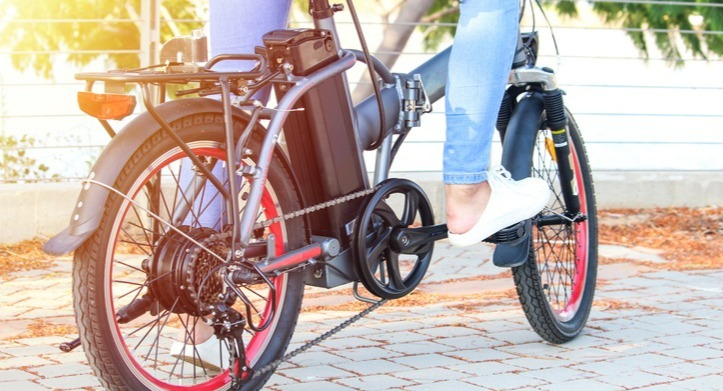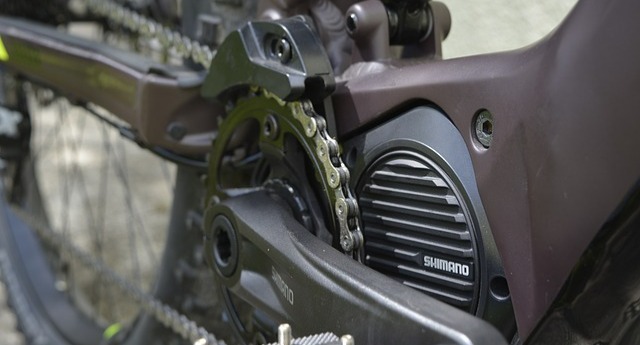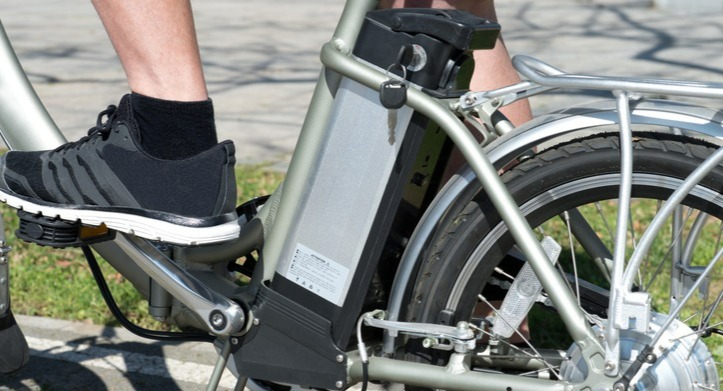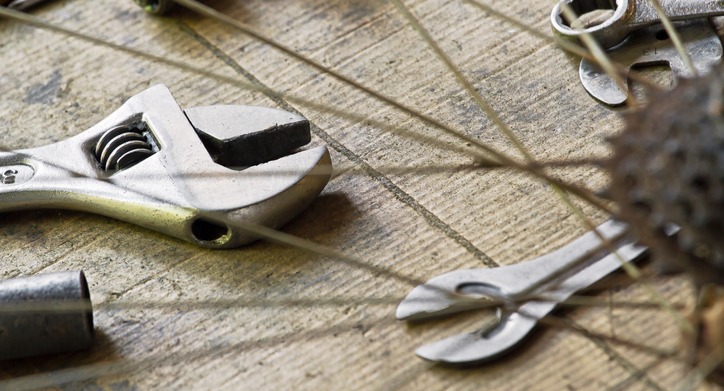
Electric Bike Buying Guide
There's no questioning the increasing popularity of electric bikes. For example, e-bike sales surged by 240 percent during the pandemic from 2020 to 2021. Sales outpaced electric cars and trucks.
According to various sources, electric car and truck purchases totaled 608,000. However, electric bike sales reached 880,000. And their sales are forecast to continue increasing.
PR Newswire reports that the electric bike market will climb from $40,312 million in 2019 to $118,657 million by 2030. Those figures represent a compound annual growth rate (CAGR) of 10.5%.
If you’re ready to jump on board with the growing crowd of e-bike enthusiasts, read our electric bike buying guide to get more insights on selecting an e-bike.
Electric Bikes for Sale

Factors Driving E-Bike Growth
Several factors are helping to drive the popularity of e-bikes.
First, government regulations promote electric bike use. Their promotion stems from the desire to reduce carbon footprints, and e-bikes contribute to lowering carbon emissions. In addition, governments have started building bike-friendly routes.
Second, with high fuel costs, electric bikes provide a less costly commute solution. At the same time, they're eco-friendly and help to reduce traffic congestion.
Indeed, many folks rely on e-bikes for daily commutes and running errands. As a result, bike gear sales have also seen an uptick. Riders are buying second batteries, racks, panniers, and storage.
Third, there's a growing interest in cycling for fitness and recreation. And even though electric bikes make riding easier, you still have to pedal. As a result, you burn calories while supporting cardiovascular health.

What is an Electric Bike?
It's simple. An e-bike is a bicycle equipped with a motor that provides an assist while you pedal. And that motor gets driven by a rechargeable battery on the bike.
There are strict guidelines that govern what constitutes an electric bike, or its technical name, an electrically assisted pedal cycle (EAPC):
- The bike must have pedals to propel it.
- The bike must show its power output or motor manufacturer.
- It must show the battery's voltage or maximum speed.
- The bike's motor can have a maximum power output of 250 watts.
- The bike can't have the motor propel it when traveling at more than 15.5 mph.
E-bike laws require that the motor cut out at 20 mph in the United States to clarify that final requirement. Of course, you can ride faster than that, but the motor cannot help propel the bike, only your pedaling.

How do Electric Bicycles Work?
Electric bikes have a motor installed centrally or on the front or rear hub. As you pedal, a sensor measures your effort and matches that to the motor's output. And here's a key – the e-bike’s motor never completely takes over. Instead, it only provides a power assist.
Although it can make riding less taxing, you still have to pedal. So, you gain fitness benefits. A controller lets you select how much assistance you want from the motor. Typically, it offers three to five levels of assistance.
For example, if you're about to climb a steep hill, you can increase the assistance to boost you. You can change the levels as you ride. In addition, you can turn off the motor and ride the bike normally using the pedals to drive it.

What do Electric Bikes Cost?
Standard e-bikes will set you back anywhere from $1,000 to $3,000. You can pay a bit more for folding varieties. Off-road electric bikes cost even more, up to $5,000. Premium bikes run $10,000 or more.
Several factors influence costs:
- Motor, power, and speed
- Battery
- Weight and frame
- Added features
Purchase costs aside, remember there are also charges for electricity. For instance, a 32-mile commute to work would cost you $1.28 based on $0.04 per mile electricity costs.
Got Questions About E-Bikes?

Electric Bicycles Weigh More
As you might expect, that motor makes e-bikes heavier than standard bicycles – expect an electric bike to weigh an additional 13 to 17 pounds. The mounting components and more substantial frame required to hold the motor add some weight.
Generally, electric bikes don't handle as well as other bikes owing to that additional weight. However, you gain what you lose in maneuverability from the pedal assistance, which makes the ride less stressful.
You can get electric bicycles in numerous versions. Mountain bikes and hybrid bikes are the most common e-bikes. But you can also find road, cruiser, and gravel bikes fitted as electric bikes.

Motors
There are two types of motors:
- Mid-drive motor
- Hub-drive motor
Mid-drive motors sit on the bottom bracket where the crank arms attach to the bike's frame. Their chief advantage is comfort. Having the motor in the bike's center keeps your ride balanced and stable.
Hub-drive motors are placed at the rear or front of the bike. Rear-wheel hub-drive motors send power directly to the wheel, so it feels like the bicycle is pushing you forward. Front-hub motors act like front-wheel drive cars and pull you along. They also allow for a standard bike drivetrain at the rear.

Batteries and Ranges
Most e-bikes can go 22-50 miles on a single charge. If you want to reach the higher end of that range, you'll need to pedal more. The more you pedal, the farther you can go without recharging the battery.
For example, bike shops like Bicycle World NY carry e-bikes that range up to 75 miles, depending on how much you “boost.” In addition, many electric bicycles now come with a place for a second battery, doubling your range.
Even then, battery life and range get dictated by other factors:
- Weight
- Average speed
- Tire pressure
- Tire type
- Terrain
- Battery age
- Pedaling
Another critical factor is how much you use the throttle on your e-bike if you have one. The less you use the throttle, the farther you can go on a charge. Dialing down the assistance level can also improve your range.
Apart from these factors, it comes down to battery capacity. For example, a battery with 500 watt-hours delivers more range than one with 350 watt-hours.
Typically, most 500-750W batteries can travel 25 miles on reasonably even terrain. However, electric bikes in this wattage category let you handle more rugged landscapes.
In contrast, e-bikes with a 250W battery allow you to travel 15 miles on a single charge riding on even terrains.
You can check out Bosch's E-Bike Range Calculator for more insights into your bike's range.
Looking for Electric Bike Accessories?

New York Laws Governing E-Bikes
Depending on the classification of an e-bike, there are different legal requirements governing e-bike use. Here's an overview of New York City.
Class 1 | Class 2 | Class 3 | |
Maximum Speed | 20 mph | 20 mph | 25 mph |
License Required | No | No | No |
Registration Required | No | No | No |
Helmet | Required for 16-17-year-old's & working cyclists | Required for 16-17-year-old's & working cyclists | Required by law |
Access | Bike lanes & streets with speed limits no greater than 30 mph | Bike lanes & streets with speed limits no greater than 30 mph | Bike lanes & streets with speed limits no greater than 30 mph |
These laws differ somewhat for New York state:
- Riders must be over 16 years old.
- The maximum speed limit is 20 mph.
- Riders must wear helmets if the bike can go over 20 mph or if they are under 18.
It's important to note that each city, town, or village in New York may have additional legal requirements for electric bikes.

Maintenance of Electric Bikes
Electric bicycles require more maintenance than regular bikes owing to the moving parts. However, you can reduce your visits to an e-bike repair shop with home maintenance.
You'll want to pay attention to these items:
- Inspect your brake calipers, pads, and levers
- Inspect and inflate your tires
- Keep your e-bike clean
- Check chain and drivetrain wear
- Degrease your drivetrain and lube your chain
Apart from self-maintenance, you'll also want to get a professional inspection. For example, it's best to have a tune-up every 500 miles or every six months with regular use.
Ready to Shop for an Electric Bike?
Stop by our cycling shop in Mt. Kisco, NY, if you're ready to take the plunge and buy an electric bike. We have a great selection of e-bikes, including Trek, Gazelle, Electra, and Surly.
Our knowledgeable staff will work with you to find the right e-bike based on your riding needs. We can also outfit you with excellent cycling gear, clothing, and shoes.
And when you want to need your bike serviced or repaired, our bike repair shop is on hand. Expertise and Bicycling Magazine named our bicycle store one of the best repair shops in New York.





